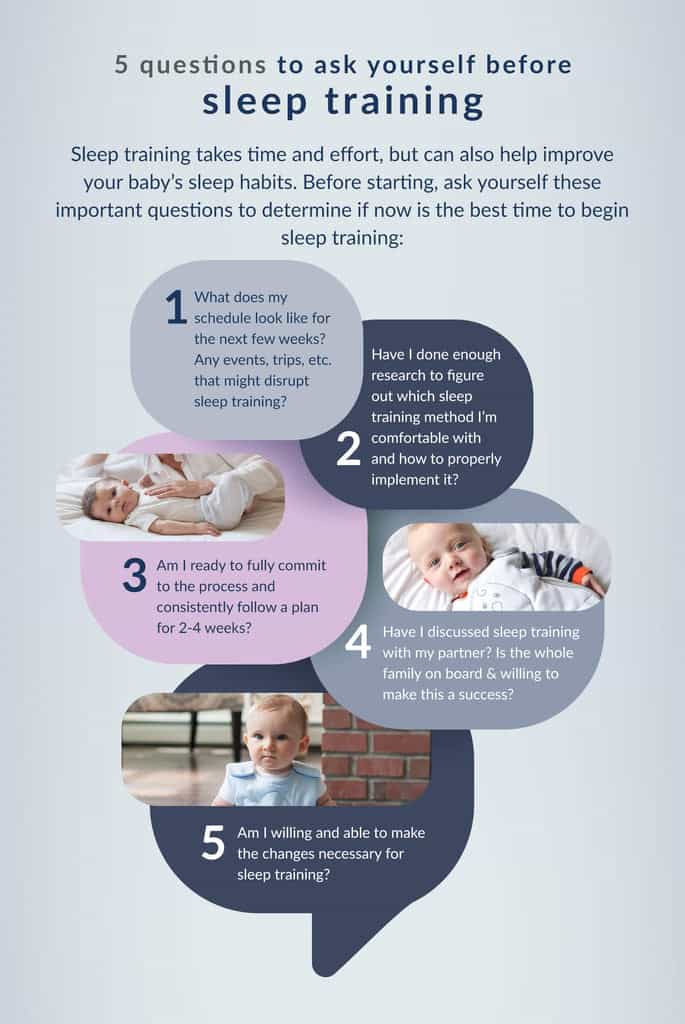When to Start Sleep Training a Newborn: A Parent’s Guide
Oh, hello there, wonderful parents! Are you floating through the early days of parenting on clouds of joy but also wondering about sleep… no, not yours (we know that’s a luxury!), but your baby’s sleep patterns? Well, you’re in the right place! Let’s talk about the all-important question: When is it the right time to start sleep training a newborn?
If you’ve been daydreaming about a full night’s rest, read on as we snuggle into the cozy topic of sleep training and uncover the ‘whens’, ‘whys’, and ‘hows’ to guide your little starlight to dreamland.
Understanding Newborn Sleep
First things first! Before we jump into sleep training methods, it’s crucial to understand that newborns have tiny tummies and need regular feeds. This means they naturally wake up every few hours. In the first few weeks of life, expecting them to sleep through the night might be a bit like expecting a kitten to bark – adorable but highly unlikely.
Is There a Magic Age for Sleep Training?
While there’s no one-size-fits-all answer, most sleep experts suggest that parents can start introducing gentle sleep training techniques around 4 to 6 months of age. Prior to that, it’s essential for babies to wake up during the night to feed. But by 4 to 6 months, some babies may be physically capable of going longer stretches without eating and could be ready for some gentle nudging towards better sleep habits.
Listenn Your Baby’s Readiness
A key part of knowing when to start is tuning into your baby’s cues. Each baby is as unique as a snowflake, and while age provides a general guideline, readiness can vary. Here are a few signs that your baby might be ready for sleep training:
- Baby starts having longer stretches of sleep at night.
- They’re able to soothe themselves for short periods, maybe by sucking on their fingers or gently cooing.
- Their feeding and growth are consistent, with approval from your pediatrician.
Once these boxes are ticked, you might just be ready to embark on the exciting journey of sleep training!
Gentle Sleep Training Methods
Don’t worry; sleep training doesn’t necessarily mean leaving your baby to cry it out. There’s a galaxy of gentle sleep training methods out there that can help shape sweet dreams for your little one. Here are a few to consider:
- Pick Up/Put Down Method: This involves comforting your baby when they cry by picking them up but putting them back down before they fall asleep.
- Fading Method: You slowly decrease your presence in the baby’s room, which helps them learn to fall asleep independently over time.
- Bedtime-Routine Fading: Create a calming bedtime routine and gradually move the time earlier until you reach the ideal bedtime.
Remember, all these methods require oodles of patience and consistency. And always, always follow your baby’s lead and talk to your pediatrician before starting any new sleep routine.
Setting the Stage for Successful Sleep Training
To give your sleep training escapade the best chance of success, here are some tips to create the perfect sleep environment:
- Keep the room dark and cool – think peaceful cave, not bright jungle.
- Incorporate white noise to drown out any sudden sounds that might startle your baby.
- Ensure your baby has a safe sleeping space, following the guidelines for a safe sleep environment as recommended by pediatricians.
Happy sleep training journeys start with well-informed and well-prepared parents. So dress your little bundle in their snuggliest PJs, and let’s turn the page to bright mornings and restful nights!
Stay tuned, as we’ll delve deeper into the enchanted forest of sleep training in our next mind-bubbling installment. Sleep tight and sweet dreams – for both you and your cherub!

Five Essential Sleep Training Preparation Tips for Parents
Embarking on the sleep training journey requires more than just knowledge—it requires preparation. To ensure that you’re fully equipped to guide your baby into a land of peaceful slumber, here are five crucial tips to bear in mind:
- Understand Sleep Cycles: Familiarize yourself with the natural sleep cycles of infants. Knowing the difference between REM and non-REM sleep and recognizing when your baby is in a light or deep sleep can help you time your sleep training efforts more effectively.
- Establish a Consistent Routine: Babies thrive on consistency. Start shaping a bedtime routine that you can stick to every night. This might include a warm bath, a gentle massage, soft music, or reading a bedtime story. These rituals signal to your baby that sleepy-time is approaching.
- Create a Sleep-Conducive Environment: Your baby’s room should be conducive to sleep. Invest in room-darkening shades to keep it dim, maintain a cool room temperature, and consider adding a quiet fan or a white noise machine to provide a calm background hum.
- Master the Art of the Wind-Down: In the hour before bedtime, begin winding down activities. Limit stimulation like loud noises, bright lights, and vigorous play. This helps your baby to relax and understand that the environment is shifting toward rest.
- Be Aware of Sleep Regressions: Sleep regressions are periods when a baby who’s been sleeping well suddenly starts waking frequently at night or refuses to nap during the day. They are normal and often coincide with developmental leaps. Stay flexible and patient during these times.
The key to sleep training is not just in a single technique but in the harmonious blend of preparation, patience, and attentiveness to your baby’s needs. While the journey might have its fair share of ups and downs, it’s a path well worth traversing for the restful nights that lie ahead. So, let’s embark on this adventure with lots of love, a sprinkle of science, a dash of dedication, and heaps of hope for peaceful nights. Sweet dreams to the whole family!
See more great Things to Do with Kids in New Zealand here. For more information see here
Disclaimer
The articles available via our website provide general information only and we strongly urge readers to exercise caution and conduct their own thorough research and fact-checking. The information presented should not be taken as absolute truth, and, to the maximum extent permitted by law, we will not be held liable for any inaccuracies or errors in the content. It is essential for individuals to independently verify and validate the information before making any decisions or taking any actions based on the articles.




